How will these resources help you?
Very little demonstrates the power of nature as natural hazards do, whether they are tectonic and geological hazards such as earthquakes, volcanoes, mass movements or tsunamis, or weather and climatic hazards such as wildfires, tropical storms, heatwaves and blizzards. The processes that drive these natural phenomena are often complex, requiring at least a working level understanding of science. However, there are plenty of science communicators who have attempted to distil the science to make it more accessible.
Tectonic Processes
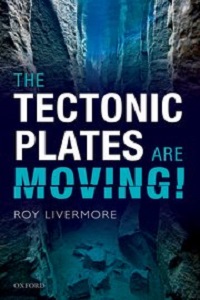
The Tectonic Plates are Moving!
by Roy Livermore, published by Oxford University Press, (2019), 9780198847939
There appear to be few publications out there which attempt to give a nuanced narrative of plate tectonics, while attempting to make the science more accessible. One of the best attempts is Livermore’s book. His style is one of a little humour and wit, where you can dive into the broader history of the science or explore the wider implications of tectonic processes. The link given here gives a worthwhile review of the book, especially noting the current hot debate on the mechanisms that drive plate tectonics.
Atmospheric Processes
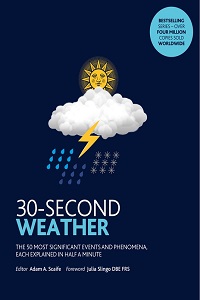
30-Second Weather: The 50 most significant phenomena and events, each explained in half a minute
by Adam Scaife, published by Quarto (Ivy Press), (2019), 9781782407546
I would consider this book an extended glossary, which is handy for a subject that can get fairly messy in physics, mathematics and chemistry. You can pick it up and go straight to the term or process of interest, where you will find a simple definition, a summarised explanation and often a titbit of facts or history. While the illustrations are more for creative licence, they are often diagrammatic enough to help visualise the processes being described. Plus, they are quite pretty!
Extreme Weather

Cold: Adventures in the World's Frozen Places
by Bill Streever, published by Little, Brown Book Group, (2009), 9780316042918
I have used passages from both these books when teaching high-school students about extreme weather. For example, in Cold, while Streever tells the tale of the likes of the School Children’s Blizzard of 1888, nested within are other stories of the importance of cold and discoveries made because of the cold.
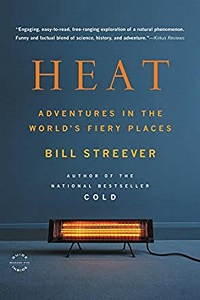
Heat: Adventures in the World's Fiery Places
by Bill Streever, published by Little, Brown Book Group, (2013), 9780316105323
For me, it helps to develop an appreciation that cold may not just mean blizzards, and heat may not just mean heatwaves and trips to the beach. In my opinion, developing a greater appreciation for ‘cold’ and ‘heat’, helps to also appreciate the hazards that come with them.
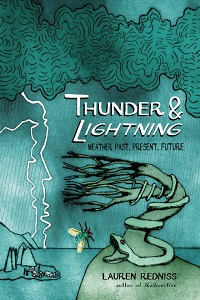
Thunder & Lightning: Weather Past, Present and Future
by Lauren Redniss, published by Random House, (2016), 9780224096751
A unique and beautifully crafted book. In all my years of studying weather and climate, I had never come across anything like it. The book is full of tales about how weather shapes our world and impacts on our daily lives. Each chapter focuses on a particular element of the weather, wind, heat etc. The visual art are conversation pieces in themselves and provide rich and thought-provoking stimuli for discussion and exploration. Redniss references all the articles and research used, to allow for further reading.
Wildfire
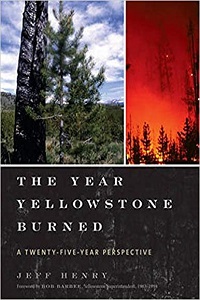
The Year Yellowstone Burned: A Twenty-Five-Year Perspective
by Jeff Henry, published by Taylor Trade Publishing (Rowman & Littlefield), (2015), 9781589799035
I have had the privilege of visiting Yellowstone National Park in the USA a number of times, including taking a group of high-school Geography students there. The landscape and ecosystem is truly majestic, but it is also one which is potentially fragile and in need of conservation. In 1988, a wildfire consumed 800,000 acres, just over a third of the park. But since Yellowstone is a relative wilderness, there was an opportunity to study how the ecosystem would naturally recover and adapt. Henry documented a 25-year period since the fire, including amazing imagery, to show how wildfire is a natural part of an ecosystem, despite its apparent malevolence.
Audiovisual clip
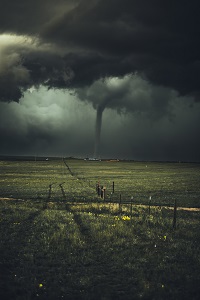
Wild Weather with Richard Hammond - Tornado
published by BBC, (2014)
This clip explains how tornadoes are formed, how they move, and what their effects can be.
Further materials
NOAA Natural Hazards Viewer by the National Centers for Environmental Information
Visit this website
Tectonic Explorer by The Concord Consortium
Visit this website
NOAA SciJinks Hurricane Simulation by the NOAA National Environmental Satellite, Data, and Information Service (NESDIS)
Visit this website
Kit Rackley is a freelance sci-communicator, author, podcaster and educator with extensive experience teaching high-school Geography and as an associate tutor for the Secondary Geography PGCE course at the University of East Anglia. They are a consultant to the Geographical Association and the National Association of School-Based Teacher Trainers (NASBTT). Their work can be found at Geogramblings.com.
Text © Kit Rackley, 2022.
Text © Kit Rackley, 2022.



